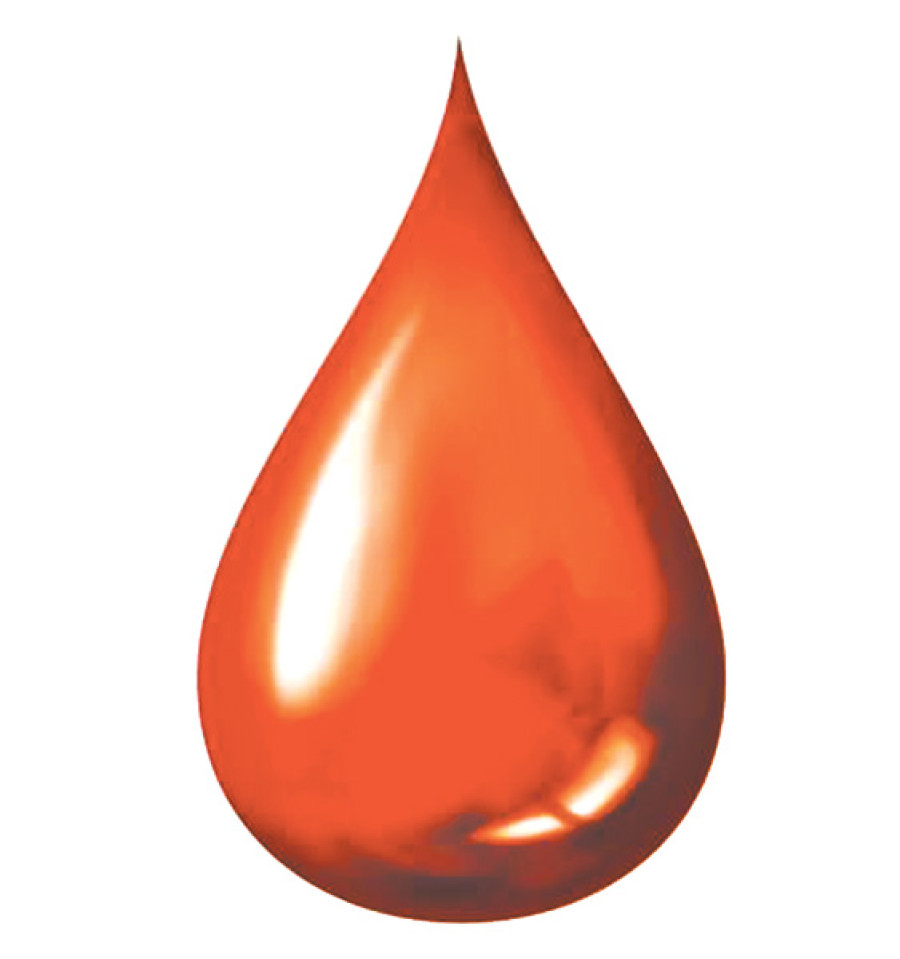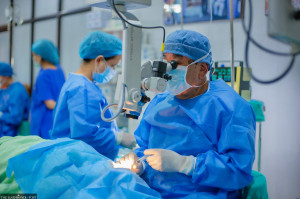Opinion
Blood worth bottling
In the “modern” slaughterhouses in India, live cattle, pigs and chickens are hung upside down by one leg, breaking the pelvic bone immediately.
Maneka Sanjay Gandhi
In the “modern” slaughterhouses in India, live cattle, pigs and chickens are hung upside down by one leg, breaking the pelvic bone immediately. They spend hours in an assembly line before boiling water is poured on them to loosen their skin. Then their throats are slit so they bleed out and die.
The blood is accumulated in troughs. The quantity of blood is vast and is stored in huge vats until tankers come to collect it. It is then either taken to rendering plants with blood processing facilities, or disposed of in sewers that lead into the nearest water body, dumped in landfills or spread over land. A certain amount is used to make human food and animal feed.
According to the FAO, approximately 304 million cattle, 959 million sheep and goats, and 1374 million pigs were killed for their meat in 2010. By 2016 this number increased by 10 percent. When bled out, one cow produces 15 litres of blood, and one pig produces two to three litres of blood. This amounts to 4.56 billion litres of blood from cattle annually.
In just one month, nine million pigs are slaughtered in the USA alone-that amounts to 114.79 million pints of blood going down the drains. In China, 150 thousand tons of porcine blood is produced yearly. The world is soaked in blood every day.
The food industry uses about 30 percent of this blood. It is used in food as an emulsifier (an agent that mixes different liquids), a stabilizer to prevent oil and water from separating in the finished food product, a clarifier, a colour additive, and as nutrition.
Blood from slaughterhouse animals is collected in two ways. The first is open draining, where blood from the animal is collected in buckets or trays. The second is via a closed draining system, where a hollow knife is stuck in the animal’s throat and connected to vacuum piping. While both these processes are occurring, the animal is still alive so that the heart continues to pump enabling easy extraction of blood. The rendering plant processes whatever comes into a slaughterhouse in order to maximise profit. But what does it do with the blood?
Animal feed
The bulk of the blood goes to feed the animals themselves. Blood from cattle, sheep, pigs, and chickens is added to pet food and fish food as a source of cheap protein. In some cases, the plasma is separated from the red blood cells and used as a protein supplement for piglets. Spray-dried blood and porcine plasma is used as growth enhancers in animal feed, and haemoglobin is used to feed carnivorous fish and shrimp. Dried blood-meal is also used as fertiliser.
Blood is used in livestock feed as a protein supplement. These vegetarian animals are fed the blood of their own kin. The British have accused India of being the source of Mad Cow Disease, which destroys the brain. Apparently, the soya beans India sent to Britain for the purpose of cattle feed were made into blocks by using blood as glue. The cows ingested the blood and developed a disease that they passed on to humans.
Over 3 million cows were killed in the UK alone to eradicate the disease; however, it is still found all over the world and is a direct result of animals being fed blood. In some cases, we can also contract a human form of the disease.
Imitation games
Even people who eat meat find the thought of eating blood distasteful. But industries are working to use the blood in different ways. Plasma protein from pigs and chickens are used in the making of surimi, a form of fish gel. Surimi products are usually used for manufacturing imitation seafood products such as crab, abalone, shrimp, calamari, and scallop. Several companies produce surimi sausages, luncheon meats, and hams.
Porcine blood enzyme and protein—transglutaminase, fibrinogen, and thrombin—have been used as binders in restructured meat products. These are used to rearrange bits of left over low value meat, so that it resembles intact meat like steaks, chops, or roasts that are of higher value.
While many companies in the US have been exposed for their fraudulent use of blood plasma instead of real meat to increase profits and upgrade products, no action has been taken so far. In May 2010, the EU voted to ban the use of Fibrimex®, which is a blood protein used to reconstitute meat.
The reasoning behind this decision was that the product has no proven benefits, and its usage carries a high risk of misleading consumers. The EU believed that Fibrimex® reconstituted meat products would find their way into meat dishes served in restaurants, given the higher prices that can be obtained for leftover pieces of meat glued together and sold as a single meat product. The ban, however, was never put into effect.
Haemoglobin powder from cow and pig blood is used as meat colorants. Blood plasma has the ability to form a gel, and looks like cooked egg whites. It is often added to cooked ham pate, minced meats and hot dogs. Replacing egg whites with blood plasma in the baking industry is now being considered, as it would result in cheaper costs.
Several countries use whole blood to make popular foods such as blood sausage, black pudding, or blood tofu. Popular in Italy, blood pudding is coagulated blood that is baked like a cake. Czarnina is a Polish duck soup made of duck blood, and nam tok is a soup from Thailand made from cow and pig blood.
Use in medicines
Blood collected in slaughterhouses is also used in both animal and human medicines. Purified bovine albumin is used to replenish blood or fluid loss in animals. It is used in testing for the Rh factor in human beings, and as a stabilizer for vaccines. It is also used in antibiotic sensitivity tests.
Porcine plasma is used to dissolve blood clots in heart attack patients. Bovine thrombin is used to promote blood coagulation in humans, treat wounds and hold skin grafts in place. Bovine plasma is used as a medium in laboratories to grow probiotic lactobacilli, and for human medicines like porphyrin. Blood products are also used as nutrients for tissue culture media.
In recent years, much attention has been paid to the extraction of peptides from animal blood. They are sold as tonics. For instance, many companies sell Heme iron polypeptide tonics made from animal haemoglobin. Though these tonics treat iron deficiency, side effects include upset stomachs and allergic reactions, such as a swelling of the face and throat.
Animal blood derivative peptides are used in commercial food and nutraceuticals (non-medicinal nutrients used as supplements). While some companies admit that their dietary supplements are derived from bovine serum, many still hide this usage.
There are efforts being made to persuade developing countries with malnourished children to mix blood proteins in cereal. This would boost diets that are used to supplement breast feeding during the transition from exclusive breast feeding to a mixed diet, and thereafter as a major breakfast meal.
Until now, government and international bodies have used plant protein in the formulation of weaning diets. However, there is pressure to put blood protein into infant formulas due to their abundance and cheapness.
Blood protein also has a proven track record in animal nutrition. Commercial use of blood could also be used to target anaemia in developing countries by adding bovine blood iron supplements to staple foods. If I am not mistaken, the Indian Health Ministry has just passed an order asking for grains to be fortified with iron.




 11.12°C Kathmandu
11.12°C Kathmandu










